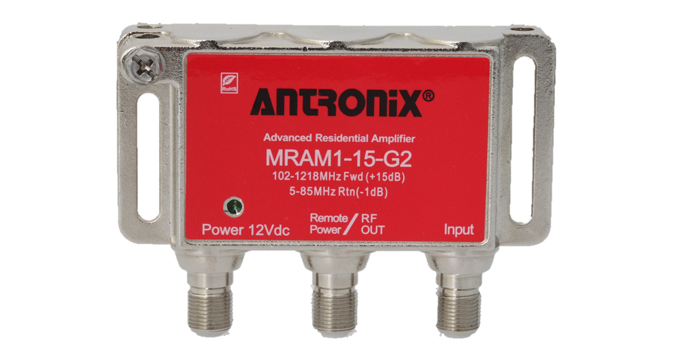This post is sponsored by Antronix.
The cable industry is advancing broadband networks with the introduction of 10G networks. The industry already reaches 80% of US homes with 1 gigabit speeds, which has laid the foundation for 10G and beyond.
“With groundbreaking, scalable capacity and speeds, the 10G platform is the wired network of the future that will power the digital experiences and imaginations of consumers for years to come,” NCTA President and CEO Michael Powell said at CES 2019.
In this Q&A, Antronix President Neil Tang discusses the evolution to 10G, its challenges and benefits and how this technology platform will provide flexibility for greater efficiency and scalability. The conversation also delves into how Antronix is developing products to ensure the 10G rollout becomes a reality.
Why is 10G the next step in broadband’s evolution and why is it important for the cable industry?
10G is the path to 10 Gbps data rates for the cable industry. As our networks evolve, more and more bandwidth is required for demanding services that require high speed, low latency and high availability. 10G will keep cable operators competitive in the data delivery marketplace as telcos build out 5G networks.
What are the benefits of 10G?
Cable providers are rightly focused on delivering the best in customer experiences, and achieving 10 gigabits per second – an advancement in network capacity and speed – will meet and exceed consumer demands. It will also allow the advancement of developing technologies and facilitate innovation.
10G will require new network products. How will Antronix products meet those needs? The development and promise of 10G is a great opportunity for ingenuity in the cable-broadband industry. We have several options to increase bandwidth: Full Duplex (FDX), Extended Spectrum DOCSIS, Fiber to the X and Ultrawide Band. Several solutions are available to address varying market and network challenges.
Antronix is developing and building products that broadly facilitate the solutions that cable operators may apply. We already have available products — amplifiers, line passives, drop passives, multi-taps — above 1.2 GHz that address current bandwidth constraints. We are also engineering products to address the challenges associated with echo cancellation technology in FDX.
How do we make 10G cost-efficient and scalable?
The good news about the efforts to achieve 10G is all the options operators have to get there. Cable-broadband providers will determine the best roadmap to 10G, and they will utilize the mix of technology that serves their service areas most efficiently.
Neil Tang is Antronix’s president. In his prior role as principal engineer, Neil managed the development of Antronix’s line of advanced residential amplifiers, which currently represents more than 50% of the industry market share. As chief executive officer, he is the driving force behind the company’s “customer first” strategy, resulting in Antronix developing a variety of products — such as passives and amplifiers to facilitate MoCA and high frequency transmission products about 1 GHz — based entirely on customer feedback. Neil holds bachelor’s and master’s degrees in electrical engineering and has worked in telecommunications for more than 20 years. He has expertise in electrical engineering, RF/microwave engineering design, telecommunications product development and design and manufacturing. As a member of SCTE-ISBE’s Standards Committee, he helps to develop engineering standards and future architecture for the future of the cable and television industry.
